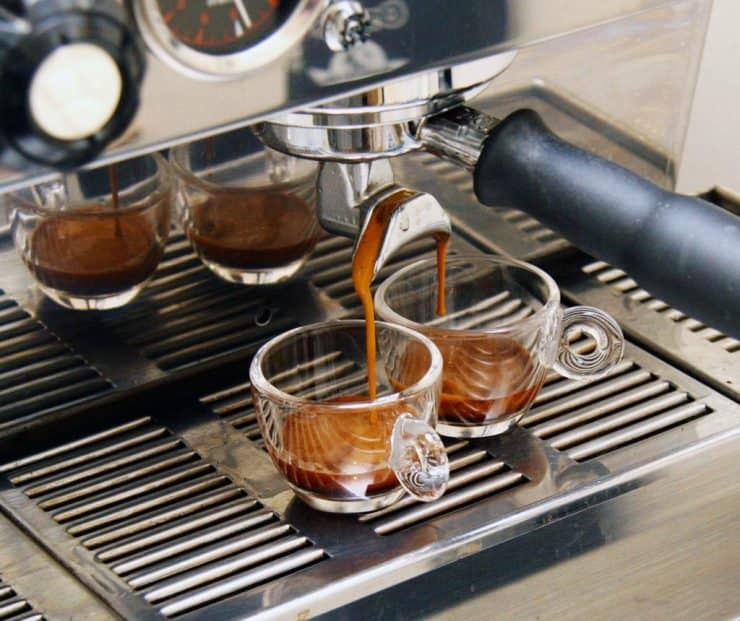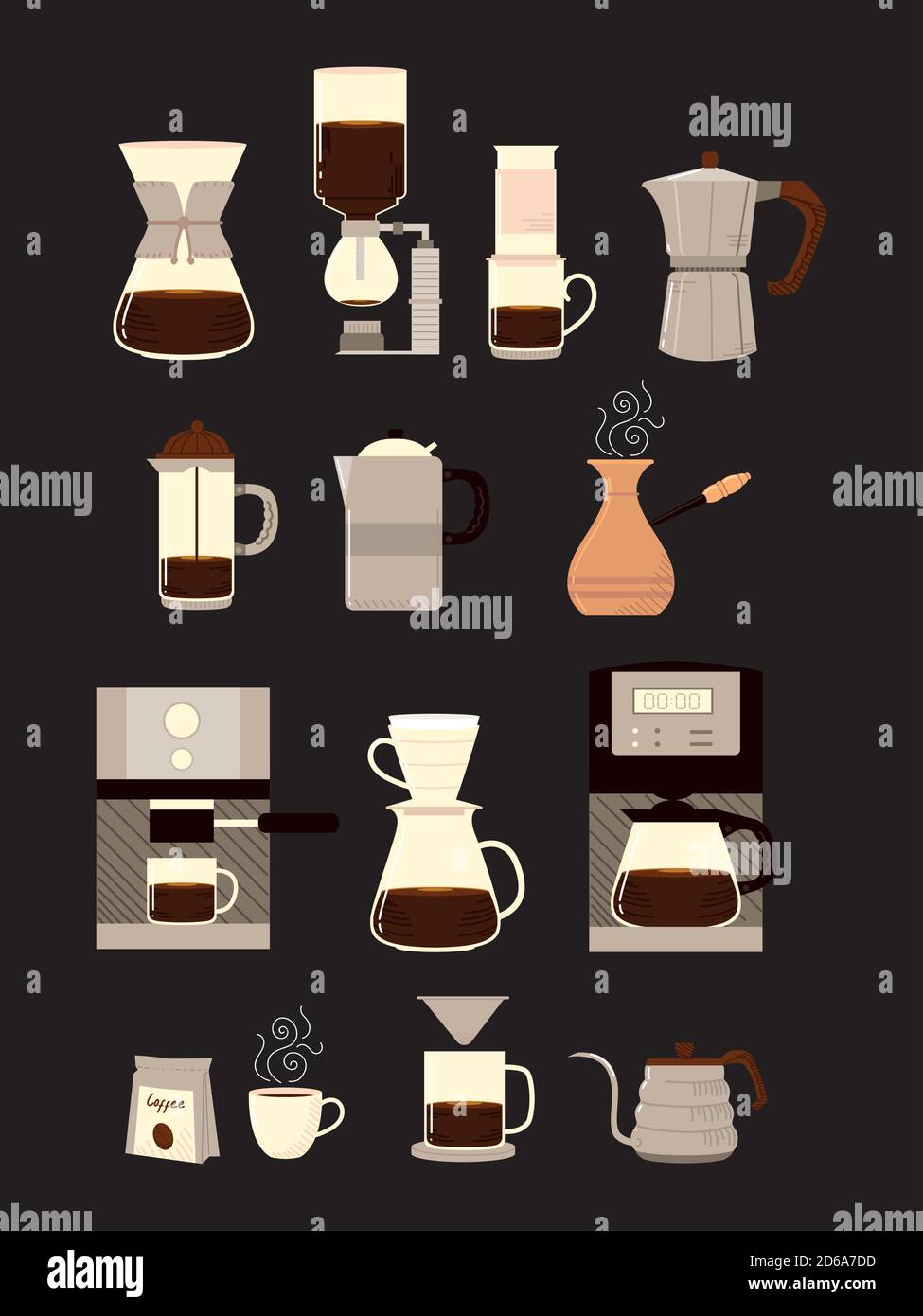Grasping Coffee Brewing Methods: Important Techniques for each Coffee Lover
Grasping Coffee Brewing Methods: Important Techniques for each Coffee Lover
Blog Article
The Scientific Research Behind Coffee Developing: Exactly How Temperature Level and Time Affect Your Drink
Understanding the scientific research behind coffee developing reveals that temperature and time are not simple variables however essential aspects that determine the drink's taste account and total top quality. The optimal brewing temperature usually falls in between 195 ° F and 205 ° F, while the period of extraction differs dramatically across different techniques. This interplay of aspects can result in a cup that is either disappointing or delightful. As we explore the subtleties of these aspects, the concern emerges: just how can one efficiently equilibrium temperature and time to achieve that ideal mixture?
The Chemistry of Coffee Extraction
The chemistry of coffee extraction looks into the intricate procedures that transform raw coffee beans into the fragrant beverage delighted in worldwide. This makeover primarily involves the solubility of various substances present in the beans, which are affected by factors such as work dimension, water quality, and the brewing method used.
During the developing procedure, warm water acts as a solvent, drawing out soluble compounds, consisting of caffeine, sugars, lipids, and acids, from the coffee grounds. Each compound contributes to the flavor account, scent, and body of the last beverage. Acids are liable for brilliant and tangy notes, while oils contribute to an abundant mouthfeel.
The removal procedure is not uniform; different substances liquify at different prices. The initial phases of brewing essence acids and sugars, causing a pleasurable level of acidity, while extended removal can cause resentment due to over-extraction of undesirable substances. Comprehending these chemical communications is vital for optimizing developing methods, as the equilibrium between removal time and water temperature level can substantially influence the overall high quality of the coffee. Ultimately, grasping the chemistry of coffee removal is key to attaining a delicious and well-rounded mug.
Suitable Brewing Temperatures
Finding the best developing temperature is necessary for unlocking the full capacity of coffee tastes and scents - coffee brewing methods. Research study shows that the optimal range for developing coffee lies between 195 ° F to 205 ° F(90 ° C to 96 ° C) Within this variety, the removal procedure successfully dissolves the desirable soluble substances in coffee beans, leading to a delicious and balanced mug
Developing at reduced temperature levels, such as below 195 ° F(90 ° C ), may lead to under-extraction, producing an acidic and weak mixture with muted flavors. Alternatively, brewing at temperatures surpassing 205 ° F(96 ° C) can result in over-extraction, producing a severe and bitter preference as a result of the too much dissolution of unfavorable substances, such as tannins.
Moreover, the excellent brewing temperature level can differ depending on the coffee bean kind and roast level. Lighter roasts commonly profit from a little higher temperature levels to enhance their complicated taste accounts, while darker roasts may be better matched to reduced temperatures to reduce resentment.
Eventually, maintaining accuracy in developing temperature levels is important for attaining a harmonious balance of tastes, guaranteeing that every cup of coffee delivers a rewarding sensory experience.
Effect of Brewing Time
Developing time plays a critical role in determining the taste account and overall high quality of coffee. The extraction process, which influences the taste, fragrance, and body of the drink, is mainly based on the length of time the coffee premises touch with water. Much shorter brewing times can cause under-extraction, bring about a weak or sour flavor, as not nearly enough soluble substances are dissolved. Conversely, long term brewing can result in over-extraction, where unfavorable their explanation substances are launched, resulting in a bitter or astringent taste.
Optimum brewing time varies relying on the technique used and the grind size of the coffee. As an example, a French press normally needs regarding four mins, while coffee removal is normally finished within 25 to 30 secs. It is important to calibrate brewing time in conjunction with various other variables, such as water temperature level and coffee-to-water proportion, to achieve the desired taste profile.
Recognizing the influence of developing time makes it possible for coffee lovers to fine-tune their developing methods, eventually enhancing the sensory experience of their cup (coffee brewing methods). With cautious focus to this variable, one can unlock the complete capacity of the coffee, disclosing its one-of-a-kind characteristics and subtleties
Developing Methods and Their Impacts

For circumstances, techniques like French press and cool brew enable a longer steeping time, causing a fuller body and durable flavor because of raised extraction of oils and soluble solids. Conversely, coffee brewing makes use of high stress and a shorter removal time, producing a concentrated shot that highlights extreme tastes and an abundant crema.
Pour-over techniques, such as Chemex or V60, use a more controlled extraction process, allowing the maker to control flow rate and water circulation, which can enhance brightness and clarity. Percolation techniques cycle water through the coffee grounds several times, leading to a stronger, frequently bitter flavor.
Lastly, making use of paper filters versus metal filters can also affect the final preference; paper filters normally yield a cleaner mug by capturing oils and fine fragments, while steel filters enable more oils to pass through, adding to a fuller mouthfeel - coffee brewing methods. Understanding these subtleties can elevate the coffee experience substantially
Tips for Developing Your Brew
A well-executed brew can transform also the most basic coffee right into an amazing experience. Grind the beans simply before making to take full advantage of quality, making certain the grind size matches your brewing Bonuses approach-- coarser for French press and finer for coffee.
Water high quality plays a crucial function; use filteringed system water devoid of contaminations. The optimal brewing temperature ranges between 195 ° F and 205 ° F(90 ° C to 96 ° C ) As well hot can burn the coffee, while as well cool may under-extract tastes.
Timing is equally important. For immersion techniques, steeping for 3 to five minutes is optimal, whereas drip approaches commonly take around 5 minutes. Try out mixture times to discover your favored stamina.

Conclusion
In summary, the intricate partnership between temperature and time is vital in the coffee developing procedure. Sticking to ideal brewing temperature levels in between 195 ° F and 205 ° F, together with precise timing tailored per approach, makes certain the wanted taste profile go is attained. Comprehending these clinical concepts empowers people to refine their brewing techniques, eventually causing a much more well balanced and enjoyable coffee experience. Mastery of these variables is crucial for any coffee fanatic seeking excellence in their drink.
Recognizing the scientific research behind coffee developing discloses that temperature level and time are not plain variables but critical elements that dictate the beverage's taste profile and total high quality. Recognizing these chemical communications is important for maximizing developing strategies, as the equilibrium in between extraction time and water temperature level can substantially affect the general quality of the coffee.Developing time plays an essential role in identifying the flavor profile and general high quality of coffee. By focusing on these aspects-- bean top quality, grind dimension, water temperature, steeping time, and proportion-- you can raise your coffee brewing process, resulting in a constantly remarkable mug.
In recap, the elaborate connection in between temperature and time is vital in the coffee brewing procedure.
Report this page